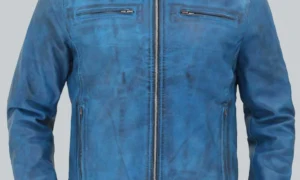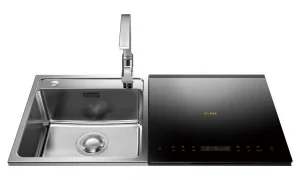In the realm of furniture design, Herman Miller has long been synonymous with innovation and cutting-edge ergonomics. Renowned for pushing the boundaries of comfort and functionality, Herman Miller continues to revolutionize workspaces and living environments. This article delves into the brand’s storied history, its commitment to ergonomic excellence, and how its furniture designs are shaping the future of comfort.
A Legacy of Design Excellence
Herman Miller’s journey began in 1905, but it was in the mid-20th century that the brand truly came into its own. The company collaborated with legendary designers like Charles and Ray Eames, George Nelson, and Isamu Noguchi, producing iconic pieces that are now celebrated as classics. The Eames Lounge Chair, introduced in 1956, is a testament to Herman Miller’s dedication to blending form and function seamlessly. As the years passed, the brand continued to evolve, consistently staying at the forefront of design and ergonomic innovation.
Ergonomics Redefined: A Focus on User Well-being
Human-Centric Design Philosophy
At the heart of Herman Miller’s success lies a deep commitment to human-centric design. The company recognizes that furniture should enhance the user’s well-being, promoting comfort and productivity. Herman Miller’s designers are known for studying human behavior and incorporating these insights into their creations. This approach ensures that each piece is not just aesthetically pleasing but also intuitively functional.
The Science of Comfort
Herman Miller takes a scientific approach to comfort, leveraging research in physiology and ergonomics. The brand’s commitment to understanding how the human body interacts with furniture has led to breakthroughs in chair design, support systems, and material technologies. The result is furniture that adapts to the user, providing support where it’s needed most and promoting healthier sitting habits.
The Aeron Chair: A Revolution in Seating
A Landmark in Ergonomic Design
No discussion about Herman Miller’s impact on ergonomics is complete without mentioning the Aeron chair. Introduced in 1994, the Aeron quickly became an icon in office seating. Its innovative use of materials, including a woven suspension membrane and breathable mesh, revolutionized the way people think about comfort at work. The Aeron chair’s adaptability to the user’s movements set a new standard for ergonomic office furniture.
Continuous Evolution
Herman Miller’s commitment to innovation doesn’t stop with the initial release of a product. The Aeron chair has undergone multiple updates, incorporating new technologies and design improvements. This commitment to continuous evolution ensures that Herman Miller’s offerings remain at the forefront of ergonomic excellence, adapting to the changing needs of the modern workplace.
Embracing Sustainable Ergonomics
Beyond Comfort: A Commitment to Sustainability
In addition to prioritizing user comfort, Herman Miller has embraced sustainability as a core principle. The brand recognizes that the future of furniture design must also consider environmental impact. Herman Miller employs eco-friendly materials, invests in energy-efficient manufacturing processes, and designs products with recyclability in mind. This sustainable approach ensures that the furniture not only enhances the well-being of users but also contributes to a healthier planet.
The Cosm Chair: Melding Comfort and Sustainability
One of Herman Miller’s recent triumphs in sustainable ergonomic design is the Cosm chair. Launched in collaboration with Studio 7.5, the Cosm chair not only embodies cutting-edge comfort but also sets a benchmark for sustainable practices. From its recycled content to its minimal environmental footprint during production, the Cosm chair exemplifies Herman Miller’s dedication to creating products that are both comfortable and environmentally responsible.
Looking Ahead: The Future of Comfort
Integrating Technology for Personalized Comfort
As technology continues to advance, Herman Miller is at the forefront of integrating smart features into its office furniture. Imagine a chair that adjusts its support based on your posture, or a desk that learns your preferences for sitting or standing. Herman Miller is actively exploring these possibilities, aiming to create a future where furniture adapts to the unique needs and habits of each individual.
Collaborative Spaces and Home Offices
The evolving nature of work has led to an increased focus on collaborative spaces and home offices. Herman Miller is meeting these challenges head-on, developing solutions that cater to the changing dynamics of the modern workplace. From adaptable workstations to ergonomic home office chairs, the brand is poised to play a pivotal role in shaping the future of how and where we work.
Conclusion
In conclusion, Herman Miller’s legacy in furniture design is inseparable from its commitment to ergonomic excellence. Through decades of innovation, the brand has not only redefined comfort but has also paved the way for a more sustainable and personalized future. As we look ahead, Herman Miller remains a guiding force, continually pushing the boundaries of what is possible in the pursuit of innovative comfort.








































